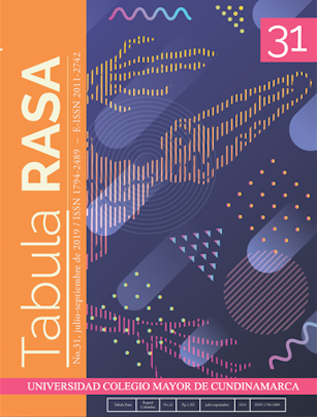"Looking glass creatures" : anti-human politics in Tenniel’s Alice.
"Criaturas espejo" : política antihumana en Alicia de Tenniel.
Show authors biography
This article proposes Tenniel’s indexical realism–biological fidelity in graphic presentation of the nonhuman–as a critical revision of the operative anthropocentrism in Carroll’s Alice stories. Both Alice in Wonderland and Through the Looking Glass are considered, and Carroll’s general reputation as an early anti-vivisection and animal rights advocate is challenged on the grounds of his welfarist carnivore position. Tenniel’s images accord with Carroll’s text on multiple key ethical points, but they also articulate a further thinking about the nonhuman and the particularly limited potential for any creature or politics “imagined” by the human. Tenniel’s other work in the period is also evaluated, as it demonstrates his racist application of animalistic traits in his political cartoon work for Punch Magazine in the nineteenth century and his other divergences from the natural historical graphic techniques in the key Alice images. Tenniel’s work is compared to the visual styles of other caricaturists and of taxidermists in the period’s vibrant animal collecting and display traditions. But ultimately, the article suggests a clear thinking about human expression vs. biological fidelity at the intersection of image and text that also reflects on theories of animality and anthropocentrism. Tenniel’s anti-human politics emerge from the context of his realist natural history techniques within the text in a challenging reflexive commentary. ftis uncanny biologism results in the haunting fantasy of the real, in such examples, as it unsettles both the presumption of rational classification and of ethical propriety, as well as the uncritical naturalness of a child protagonist. Alice is the “bad guy.”
Article visits 156 | PDF visits 83
Downloads
- Abeles, F.F. (Ed.). (2001). The Political Pamphlets and Letters of Charles Lutwidge Dodgson and Related Pieces: A Mathematical Approach. Charlottesville, VA: University of Virginia Press.
- Bewell, A. (2004). Romanticism and colonial natural history, Studies in Romanticism, 43(1), 5-34.
- British Library (2019). Lewis Carroll’s Alice’s Adventures Under Ground – Introduction. Online Gallery. Virtual Books: Images Only. Recuperado de: http://www.bl.uk/onlinegallery/ttp/alice/accessible/introduction.html
- British Library (2019a). Aesop’s Fables illustrated by John Tenniel, 1848. Collection items. Recuperado de: https://www.bl.uk/collection-items/1848-edition-of-aesops-fables-illustrated-by-john-tenniel
- Burgan, R. (2014). Anthropomorphic taxidermy: How dead rodents became the darlings of the Victorian elite. Atlas Obscura, Recuperado de: https://www.atlasobscura.com/articles/anthropomorphic-taxidermy-how-dead-rodents-became-the-darlings-of-the-victorian-elite
- Carroll, L. (1996 [1875]). Some Popular Fallacies About Vivisection, in The Complete Illustrated Lewis Carroll. Ware, Hertfordshire: Wordsworth Editions.
- Carroll, L. (1894). Sylvie and Bruno Concluded. New York, NY: Macmillan. Recuperado de: http://www.gutenberg.org/files/48795/48795-h/48795-h.htm
- Carroll, L. (1876). The Hunting of the Snark. London: Macmillan Publishers.
- Daston, L. & Mittman, G. (Eds.). (2005). Thinking with Animals: New Perspectives in Anthropomorphism. New York, NY: Columbia University Press.
- Douglas-Fairhurst, R. (2015). The Story of Alice: Lewis Carroll and the Secret History of Wonderland. Cambridge, MA: fte Belknap Press of Harvard University Press.
- Gardner, M. (1998). The Annotated Alice: The Definitive Edition. New York, NY: Norton.
- Geier, T. (2017). Meat Markets: The Cultural History of Bloody London. Edinburgh: Edinburgh University Press.
- Grandville, J.J. (1987). Fantastic Illustrations of Grandville. S. Applebaum (Ed.). New York, NY: Dover.
- Halfmann, D. & Young, M.P. (2010). War pictures: fte grotesque as a mobilizing tactic. Mobilization: An International Quarterly, 15(1), 1-24.
- Hancher, M. (1985). The Tenniel Illustrations to the “Alice” Books. Columbus, OH: fte Ohio State University Press.
- Jeong, S. (2011). fte para-indexicality of the cinematic image, Rivista di estetica, 46, 75-101.
- Kafka, F. (1995). A Crossbreed. In N. Glatzer (Ed.) & Muir (Trans.). The Complete Stories. New York, NY: Schocken.
- Kenyon-Jones, C. (2001) Kindred Brutes: Animals in Romantic Period Writing. London: Ashgate/Routledge.
- Kérchy, A. (2018). Alice’s non-anthropocentric ethics: Lewis Carroll as a defender of animal rights, Cahiers victoriens et édouardiens, 88. Recuperado de: https://journals.openedition.org/cve/3909
- Kim, C.J. (2015). Dangerous Crossings: Race, Species, and Nature in a Multicultural Age. New York, NY: Cambridge University Press.
- Lovell-Smith, R. (2003). fte animals of Alice in Wonderland: Tenniel as Carroll’s reader, Criticism, 45(4), 383-415.
- Lovell-Smith, R. (2007). Eggs and serpents: Natural history reference in Lewis Carroll’s scene of Alice and the pigeon, Children’s Literature, 35, 27-53.
- Mayer, J. (2009). fte vivisection of the snark, Victorian Poetry, 47(2), 429-448.
- Morris, F. (2005). Artist of Wonderland: The Life, Political Cartoons, and Illustrations of Tenniel. Charlottesville, VA: University of Virginia Press.
- Morris, P. & Ebenstein, J. (2014). Walter Potter’s Curious World of Taxidermy. New York, NY: Penguin.
- Morse, D. & Danahay, M. (Eds.). (2007). Victorian Animal Dreams: Representations of Animals in Victorian Literature and Culture. London: Ashgate/Routledge.
- Museum of Natural History (2019). fte Oxford Dodo. Recuperado de: https://oumnh.ox.ac.uk/the-oxford-dodo
- Paolozzi, A.E. (2015). Alice’s menagerie in Wonderland: Text and image as collaborative critique of animal display in Victorian London, Sloth, 1(1). Recuperado de: https://www.animalsandsociety.org/human-animal-studies/sloth/sloth-volume-i-no-1-march-2015/text-and-image-as-a-collaborative-critique-of-animal-display-in-victorian-london/
- Ritvo, H. (1998). The Platypus and the Mermaid: And Other Figments of the Classifying Imagination. Cambridge, MA: Harvard University Press.
- Simkin, J. (2014). John Tenniel. Spartacus Educational. Recuperado de: https://spartacus-educational.com/Jtenniel.htm
- Ftomson, P. (2019 [1972]). The Grotesque. New York, NY: Routledge.
- Wells, P. (2009). The Animated Bestiary: Animals, Cartoons, and Culture. New Brunswick, NJ: Rutgers University Press.
- Wikimedia Commons (2019). File: Dodo Natural History Museum London England. jpg Recuperado de: https://commons.wikimedia.org/wiki/File:Dodo_Natural_History_Museum_London_England.jpg
- Wikipedia (2019). File:Tenniel Knight.jpg Recuperado de: https://en.m.wikipedia.org/wiki/File:Tenniel_Knight.jpg
- Zipes, J. (1987). fte enchanted forest of the Brothers Grimm: New modes of approaching the Grimms’ fairy tales, The Germanic Review: Literature, Culture, Theory, 62(2), 66-74.
- Ziser, M. & Sze, J. Climate change, environmental aesthetics, and global environmental justice cultural studies, Discourse: Journal for Theoretical Studies in Media and Culture, 29(2), 384-410.








